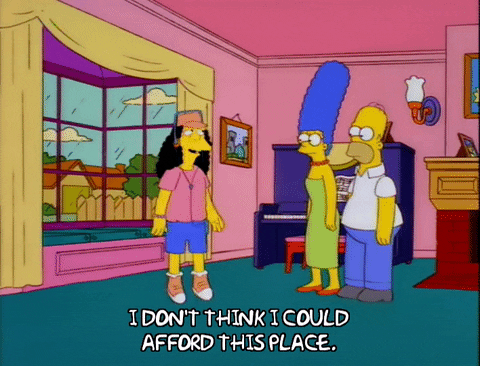The property market is still hot, but young people are taking different routes to enter it
Since the pandemic, the Australian property market has done more flips than Simone Biles at the Olympics.

To say it’s been through a whirlwind would be an understatement.
Economists and property experts have had a lot of predictions about how the property market would come out of the pandemic, but a number of those predictions haven’t held up.
In fact, the property market has been far more resilient than Kaylee Mckeown defending her titles.
But before we analyse what’s happening in the Australian property market today, let’s take a step back and look at how we got here.
During the pandemic
When the pandemic first hit and we were locked in our houses making dalgona coffee and sourdough, the RBA lowered interest rates to encourage spending and keep the economy stimulated.

Interest rates dropped to as low as 0.1% and stayed that way from December 2020 until April 2022. Sounds like an alternate universe now, but that was the reality just two years ago.
A number people took advantage of these record low rates and either entered the property market, or grew their property portfolio.
But as inflation started increasing in 2021, the RBA started hiking up the cash rate to slow down economic activity.
This got a number of economists and property experts worried that borrowers who had locked in fixed rate mortgages while interest rates were low would struggle to meet their repayments when those rates expired.
Aka - we would hit a mortgage cliff.
The great and fearsome mortgage cliff

A mortgage cliff is a period of time where a large number of fixed-rate mortgages are set to expire around the same time.
Up to 880,000 households saw their fixed-rate mortgages expire in 2023 and as the year went by, the clock ticked closer to homeowners falling off the mortgage cliff…only, they kind of didn’t.
There has been a jump in people defaulting on home loans, with mortgage arrears growing from 1.0% in the September quarter 2022 to 1.6% in March quarter of 2024, but according to Core Logic’s Tim Lawless, arrears aren’t expected to blow out unless there’s a significant change in employment rates.
Refinancing rates have been declining so it seems like we’ve crossed the mortgage cliff we were worried about. It was less a cliff, and more a small hurdle to jump over.
The property market today
Despite high interest rates, and cost of living, house prices nationally have increased by 7.7% between March 2023 and March 2024.
It’s definitely helped that the labour market has remained tight and unemployment has stayed low, so households have been able to cope with the higher interest rates.
On top of that, housing supply has been limited, which has helped push up prices too.
With high interest rates and rising property prices, it certainly hasn’t become easier to enter the property market - but Australians have been finding non-traditional routes to become homeowners.
Rentvesting to enter the property market
For starters, rentvesting has become a popular option to enter the property market - particularly amongst young people.
According to Commbank, millennials account for almost half (46%) of its new property investors in 2023.
Many of these investors are buying property in areas they can afford, and then renting where they want to live.

Commbank’s data shows that the average investment loan size is just over $580,000, whereas the average loan size for an owner-occupied property is $624,000.
That means, people can enter the property market without having to save up as large of a deposit.
Want to learn more about rentvesting? Check out the Property Investing Academy this month.
Buying in select locations
Traditionally when someone’s looking to buy property, they’re looking at the buying in areas they know well, but recently that’s changed.
With limited affordability in Melbourne and Sydney, investors have started looking beyond their own neighbourhoods.
While the property market in Victoria and New South Wales has largely stayed steady, Queensland and Western Australia and South Australia have seen tremendous growth this year.
These markets have more affordable options than Victoria and New South Wales, which has driven a lot of buyers to look in those states.
In fact, house prices in Brisbane have jumped 12.8% over the past year, growing more than Melbourne for the first time in 14 years.
Growing markets like Queensland and Western Australia are attracting both owner-occupiers and investors.
As an example, in the first quarter of 2024, 32% of new land sales in metro Perth were to investors, 34% to first home buyers, and 34% to owner occupiers.
In comparison, in 2021, the portion of investors in that market was just 17%.
Owning property is a core part of living The Great Australian Dream, so it’s not too surprising that even when affordability is tough, people in Australia are finding new and creative ways to enter the property market.
Want to learn more about investing in the property market? Check out the Property Investing Academy this month.
Sign up for Flux and join 100,000 members of the Flux family